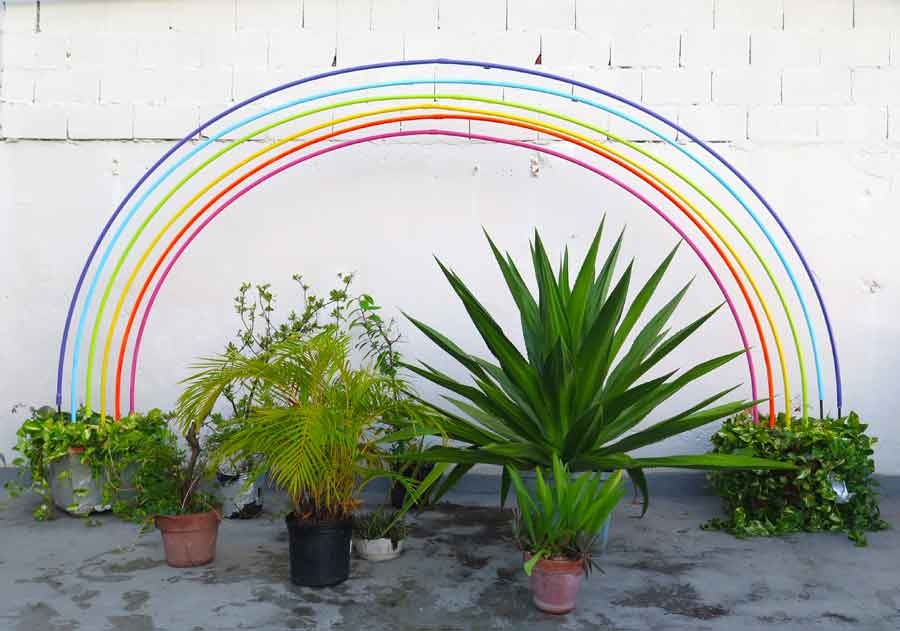I bring the flavour of the beach in my body and a taste of coconut that burns me, a night song in my throat, banana spots run through by blood. I bring the rumour of the waves in my ears and echoes of the drums that rapture me.
Ismael Rivera, Seis de Borinquen (1975)
The constant concern of Radamés ‘Juni’ Figueroa’s work has been to investigate the possibilities for creating an artistic language from a Caribbean tropical context. Central to his aesthetic investigation have been ideas of leisure and the possibilities for creation outside of the structures of capitalist workforce exploitation. Using the concept of the ‘tropical readymade’, Figueroa has placed used trainers with plants growing out of them in gallery spaces; he has constructed ‘rainbows’ out of spraypainted plastic pipes sprouting from concrete buckets; and he has made never-ending fountains from which whisky and coconut water flow.
A series of recent large-scale installations take his concept of the tropical readymade to a different scale. Eucalyptus Triangle for Meditation (2013) in the 43rd Salón (inter) Nacional de Artistas in Medellín comprised a narrow, rectangular wooden walkway/bench, raised on stilts below one of the Salón’s skylights, that served as a meditation platform and a place from which to experience the Arecaceae palms planted in tubs below it and the camouflagestyle mural Figueroa had painted on the wall behind using the colour palette of the rainbow eucalyptus tree. Meanwhile, his Casa Club – Tree House of Naguabo (2013) project – developed as part of his one-year fellowship at Puerto Rican not-for-profit Beta-Local – was a wooden structure constructed of found discarded material in the middle of the eucalyptus forest in Naguabo. Built with the help of friends, the project was partly improvised and used as little money as possible. Casa Club… celebrated friendship and served as an experimental platform activated by weekend activities – from barbecues to concerts – or functioned more simply as a place to hang out, where visitors could immerse themselves in the forest.
An upcoming exhibition at the Sculpture Center in Long Island City, and his participation in the 2014 Whitney Biennial, where he will build a structure/intervention in the museum’s exterior sculpture courtyard, will give the New York public an opportunity to experience Radamés ‘Juni’ Figueroa’s work live, while at the same time allowing Figueroa to tropicalise New York.
This article originally appeared in the March 2014 issue.
